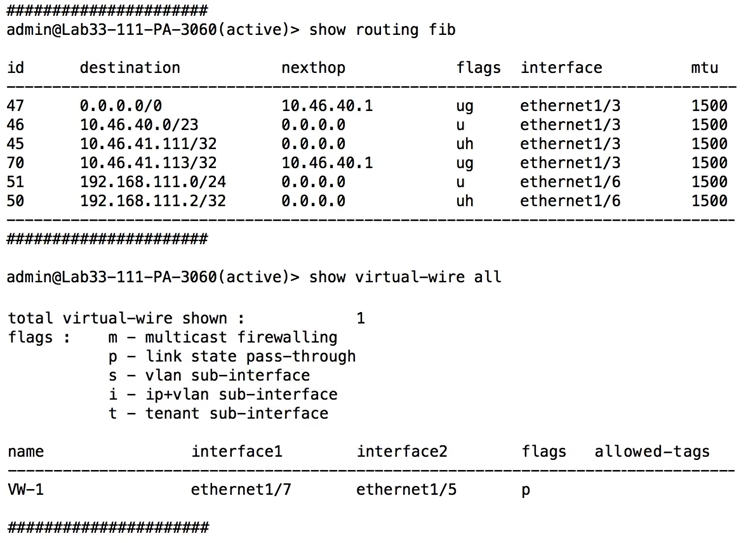Refer to the exhibit.

Which will be the egress interface if the traffic's ingress interface is ethernet1/7 sourcing from 192.168.111.3 and to the destination 10.46.41.113?
Refer to the exhibit.

Which will be the egress interface if the traffic's ingress interface is ethernet1/7 sourcing from 192.168.111.3 and to the destination 10.46.41.113?
When dealing with a virtual-wire interface setup, traffic entering one interface is passed directly to the paired interface. In this case, according to the 'show virtual-wire all' command output, ethernet1/7 is paired with ethernet1/5. Therefore, if the traffic's ingress interface is ethernet1/7, the egress interface will be ethernet1/5, regardless of the routing table. This is the core behavior of a virtual-wire configuration. Hence, the correct egress interface is ethernet1/5.
D is correct . https://docs.paloaltonetworks.com/pan-os/9-0/pan-os-admin/networking/configure-interfaces/virtual-wire-interfaces.html
Correct Ans: D. Virtual Wire would not check the L3 routing information
It's a vwyre: in 1/7, out 1/5 and vice versa.
Sorry I was wrong, because of the virtual wire is the 1/5
B is the correct answer, based on the fib output
it's a virtual wire = no fib lookup
Correct Answer
B is correct because of the destination and next hoop
No, because it is virtual wire interface, not layer 3 int.
When an interface is configured as virtual wire, the routing table is not checked by the FW. If it enters one interface, it has to exit the other interface of the virtual wire, there is no exception.
If it's "sourcing from 192.168.111.3" wouldn't that be a source of e6, thus not applying to the vwire?
Apologies, I was misreading things and was worried that there may have been a misprint in the question. D is definitely correct.
Question is on the exam. I got this question a few weeks ago... July 2023.
D is correct here
follow vwire output
I believe the correct answer is Ethernet1/3, and here’s why: While Virtual Wire (vWire) typically operates at Layer 2 and bridges traffic transparently (e.g., ethernet1/7 to ethernet1/5), the exhibit includes a routing table (show routing fib). This suggests the firewall is configured for Layer 3 routing in this scenario. 1. The routing table explicitly shows a default route (0.0.0.0/0) with a nexthop of 10.46.40.1 via ethernet1/3. 2. The mention of the source IP (192.168.111.3) further supports that routing decisions are being applied, which is not typical in a pure vWire setup. 3. This appears to be a hybrid configuration, where routing overrides the default vWire behavior for external traffic. The traffic ingressing on ethernet1/7 with a destination of 10.46.41.113 will egress via ethernet1/3, based on the routing table. This is consistent with Layer 3 routing logic.
No Routing or Switching performed by virtual wire interfaces. New updated document: https://docs.paloaltonetworks.com/pan-os/11-1/pan-os-networking-admin/configure-interfaces/virtual-wire-interfaces